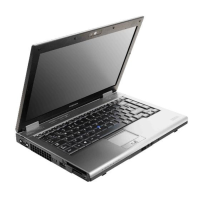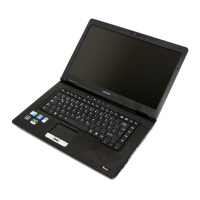88
Learning the Basics
Using the keyboard
5.375 x 8.375 ver 2.3
If your hard disk suddenly fails, you may lose all the data on it
unless you have a separate backup copy.
❖ Use Error-checking and Disk Defragmenter regularly to
conserve disk space and improve performance. Consult
your operating system documentation for more
information on these and other utilities.
❖ Scan all new files for viruses. This precaution is
especially important for files you receive via diskette,
email, or download from the Internet.
❖ Take frequent breaks to avoid repetitive-motion injuries
and eyestrain.
❖ Do not turn off the computer if a drive indicator light
indicates a drive is active.
Turning off the computer while it is reading from or writing to
a disk may damage the disk, the drive, or both.
❖ Before turning off the computer, use the Turn off
computer command or Standby command. See
“Powering down the computer” on page 112 to learn
more about Standby.
The Windows
®
XP operating system records information, such
as your desktop setup, during its shutdown procedure. If you
do not let the Windows
®
XP operating system shut down
normally, details such as new icon positions may be lost.
Using the keyboard
Your computer’s keyboard contains character keys, control
keys, function keys, and special Windows
®
keys, providing all
the functionality of a full-size keyboard.
NOTE

